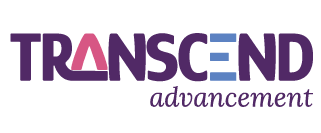Evaluating Your Communications Strategy
A Communications Office Audit
Your nonprofit’s communication strategy is the bridge between your mission and your audience. But is that bridge strong, clear, and effective? If your messaging isn’t resonating or driving engagement, it might be time for a communications office audit to refine your approach and ensure your outreach efforts are working as hard as they should be.
Why a Communications Audit Matters
An audit helps you identify gaps, strengths, and opportunities in your communications strategy. It ensures that your messaging aligns with your mission, reaches the right audiences, and ultimately drives action—whether that’s donations, membership growth, or volunteer engagement.
A strong nonprofit communication strategy should:
Clearly convey your mission and impact.
Engage and retain your audience.
Maintain a consistent voice and brand identity.
Adapt to evolving platforms and donor behaviors.
Step 1: Assess Your Key Communication Channels
Your nonprofit likely uses a mix of communication tools. Start by evaluating each one:
Website: Is it easy to navigate? Does it tell your story effectively?
Social Media: Are you using the right platforms? Do your posts drive engagement?
Email & Newsletters: Are your open and click-through rates strong?
Print & Direct Mail: Do these materials reflect your current branding and messaging?
Events & Public Relations: Are you getting media coverage and community engagement?
Action Step: Create a simple spreadsheet listing each channel and grading it (Excellent, Needs Improvement, Not Working).
Step 2: Evaluate Messaging Consistency
Your nonprofit’s brand voice should be consistent across all platforms—whether it’s a fundraising email, a donor thank-you letter, or a social media post.
Is your mission statement clear and visible?
Do you have consistent language, colors, and design across all materials?
Are you regularly highlighting impact stories and donor appreciation?
Pro Tip: If you don’t already have one, create a brand and messaging guide to ensure consistency across all communications.
Step 3: Analyze Engagement & Performance Metrics
It’s not just about sending messages—it’s about whether people are listening and taking action.
Key metrics to track:
Website traffic & bounce rates
Social media engagement (likes, shares, comments)
Email open & click-through rates
Donation conversions from communications
Event attendance driven by promotions
Example: If your emails have low open rates, it might be time to rethink your subject lines or sending frequency.
Step 4: Gather Feedback from Your Audience
Numbers tell part of the story, but your supporters’ opinions are just as valuable.
Conduct surveys with donors, members, and volunteers to ask:
What types of content do they find most engaging?
How often do they want to hear from you?
What improvements would they like to see?
Ask board and staff members for their perspectives on communication effectiveness.
Review past donor and member inquiries—Are there common questions that your communications aren’t addressing?
Step 5: Create an Action Plan for Improvements
Once you’ve gathered all this data, prioritize changes based on impact.
If your website is outdated → Plan a refresh with clearer calls to action.
If emails aren’t being read → Improve subject lines and segment audiences for targeted messaging.
If social media engagement is low → Experiment with different content formats (videos, live Q&As, donor spotlights).
Pro Tip: Break improvements into quick fixes (1–2 weeks), short-term goals (3–6 months), and long-term strategy shifts (6–12 months).
Let’s Strengthen Your Communications Strategy!
A well-executed communications plan drives engagement, deepens donor relationships, and ensures your mission reaches the right people. If your messaging could use a boost, TRANSCEND Advancement can help! Let’s conduct a full communications audit and build a stronger strategy together.
